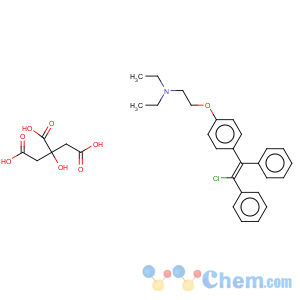Clomifene citrate
-

Molecular Structure
Detailed Description
Clomifene citrate
Another name: 2-4-[2-Chloro-1,2-diphenylethenyl]phenoxy-N,N-diethylethanamine citrate
CAS NO: 50-41-9
Structural formula: C26H28ClNO C6H8O7
Molecular weight: 598.11
Appearance: white or milky white crystalline powder
Standard: CP USP
Use: the goods to anti-estrogen fertility inducer, the objects in dysfunctional uterine bleeding, polycystic ovary, menstrual disorders and drug-induced amenorrhea and other gynecologic diseases
Application:
Clomifene (INN) or clomiphene (USAN) (trademarked as Androxal, Clomid and Omifin) is a selective estrogen receptor modulator (SERM) that has become the most widely prescribed drug for ovulation induction to reverse anovulation or oligoovulation.
Clomifene is useful in those who are infertile due to anovulation or oligoovulation.Evidence is lacking for the use of clomifene in those who are infertile without a known reason.In such cases, studies have observed a clinical pregnancy rate 5.6% per cycle with clomifene treatment vs. 1.3%-4.2% per cycle without treatment.
Clomifene has also been used with other assisted reproductive technology to increase success rates of these other modalities.
As for toxicity and side effects, Clomid is considered a very safe drug. Bodybuilders seldom report any problems, but listed possible side effects do include hot flashes, nausea, dizziness, headaches and temporarily blurred vision.
Such side effects usually only appear in females however, as they feel the effects of estrogen manipulation much more readily than men. While female athletes can clearly gain some benefit from this substance, estrogen manipulation is probably not the most comfortable way to go about cutting up.
Should it still be used for such purposed and side effects do become pronounced, the drug of course is to be discontinued and (at least) a break taken from it.

- Clomifene citrate




